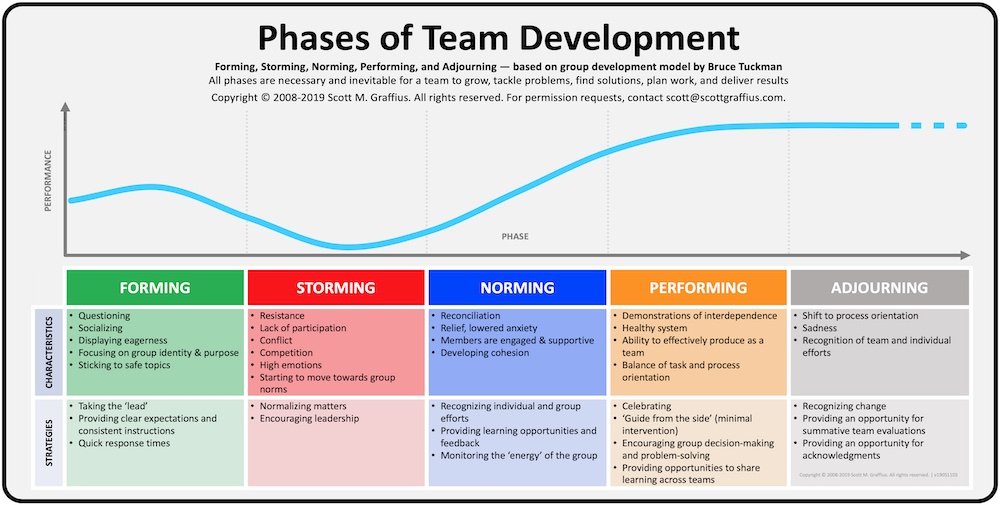The Five Stages of Team Development: How to Lead Your Team to High Performance
(Approx four minute read)
If you work in or manage a team, psychologist Bruce Tuckman’s Stages of Group Development model might help you to create high-performing teams.
In our experience managing a team can be bloody rewarding. But bloody hard too.
When we stumbled across psychologist Bruce Tuckman’s Stages of Group Development model it was a bit of a lightbulb moment about effective team leadership and team management - and getting a team to become high performing.
The model’s four stages are: forming, storming, norming and performing
An expert’s view
“In my experience of seeing how teams form, each team moves through the stages at their own pace. They can often go backwards in their development when something important is realised or a new person joins the team,” says Simon Moran, a culture change consultant who has worked for 30 years helping to make teams and organisations work better together. “That’s completely normal. Humans are unpredictable so don’t expect your team’s development to be linear. Tuckman’s model is a useful tool to continually review where your team is at – and make any necessary changes to get back on course.”
Scott M. Graffius has kindly created a digestible visual of the phases of Tuckman's model. With tactics a team leader could implement during each phase.
(read our story about The 12 things I learnt in 20 years of training and coaching the best - and worst - leaders)
Forming Stage: Laying the Foundation for Effective Team Leadership: This stage marks the initial phase of a team coming together. Everyone is nice and polite, delicate with how they approach conversations, keen to understand and establish their role and others - and the overall team objective. The leader / team lead is important here as the group looks to establish rapport and relationships.
Storming Stage: Managing Conflict and Developing Leadership Skills: As the team progresses, conflict and competition can often occur between team members. Differing opinions, a bit of metaphorical dick swing, power struggles and challenges to authority occur as people start to develop and form their own opinions of how things could be done. According to Tuckman, teams must find a way to resolve the infighting to foster a sense of team cohesion and progress.
Norming Stage: Building a Cohesive and Synergistic Team: Now things are starting to roll, there’s cohesion, consensus-building, reconciliation and trust and respect grow. There’s greater productivity and synergy in the team as well.
Performing Stage: Sustaining High Performance Through Leadership: This is it, you’ve reached the peak of the mountain. There’s high productivity, autonomy and synergy. Creativity flourishes and the team demonstrates resilience in overcoming challenges. Here, it’s the leader’s job to guide and help the team sustain performance and foster continuous improvement.
Adjourning Stage: Transitioning and Maintaining Leadership Focus: No matter how high performing your team is, nothing lasts forever. In this stage team members may move on. It’s a time of flux and transition for the team.
At least now you know if you’ve got a fairly new team and there’s some infighting, it’s all pretty normal and part of the journey to becoming a shit hot team.


